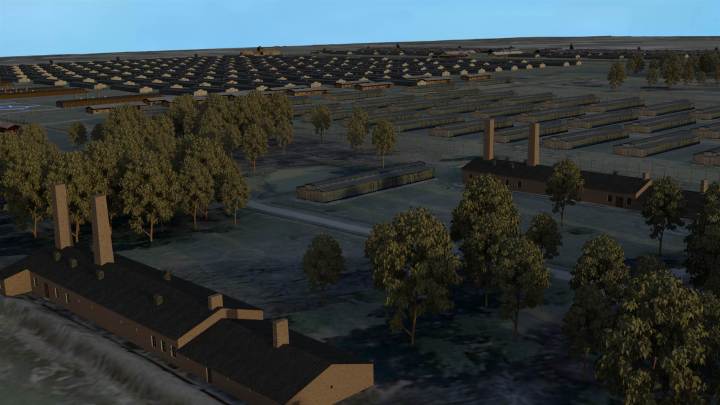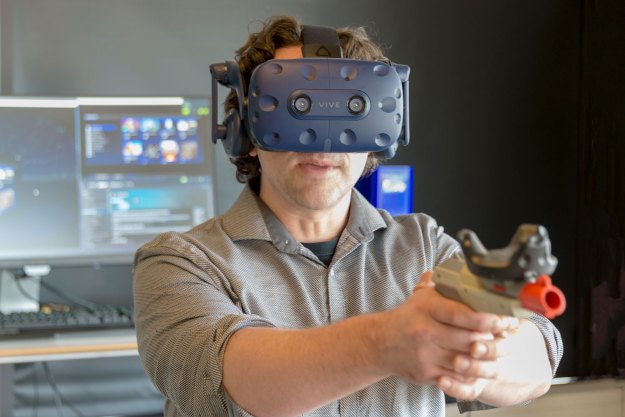
In exploring this VR version of Auschwitz, officials don special goggles that allow them to walk about the camp as though they were members of the SS, thereby seeing the landscape through the eyes of a criminal. “The model can be used in trials to counter the objection of suspects who claim that they did not witness executions or marches to gas chambers from their vantage point,” said Jens Rommel, head of Germany’s federal office for the investigation of Nazi war crimes, in an interview with NBC.
While suspects have long stood by the defense of not really knowing what was going on in the death camps, Rommel noted that this new model provides a new way to examine intent. “Must a suspect have known that people were being taken to the gas chambers or shot?” he told AFP. “This model is a very good and very modern tool for the investigation because it can help answer that question.”
The 3D model was created by LKA digital imaging expert Ralf Breker, who believes he has created the most exacting representation of the camp to date. Speaking with AFP, he added, “It is much, much more precise than Google Earth. We use the most modern VR goggles on the market. When I zoom in, I can see the smallest detail.”
Ultimately, officials hope that this simulation will aid in the prosecution of the last alleged war criminals who took part in the horrors of the Holocaust. But even going through the virtual camp (and certainly building it) has proven “one of the most difficult tasks” Breker and his colleagues have ever experienced.
“There are truly no words for it,” Breker said. “Unbelievable.”
Editors' Recommendations
- This new VR headset beats the Vision Pro in one key way and is half the price
- Disney just reinvented the VR treadmill, and it looks amazing
- Can the Quest 3 replace my laptop for work? I found out the hard way
- Apple Vision Pro vs. Meta Quest Pro: How will Apple stack up?
- Apple’s Reality Pro headset may launch sooner than anyone expected


